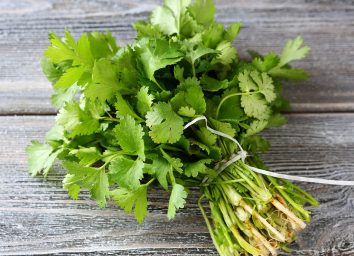Eating Foods With This Flavor May Bring Back Your Appetite After COVID

One of the most common symptoms associated with mild cases of COVID-19 is loss of sense of taste and smell. For some, these senses come back shortly after recovering from the virus, however, for others, it’s much longer.
In fact, several people reported they have yet to fully regain their sense of taste and smell many months after exposure. If foods are still tasting bland, it can be difficult to find the motivation to eat—which is why people often report that they lose weight while battling with COVID-19. (Related: The One Vitamin Doctors Are Urging Everyone to Take Right Now).
However, if you’re struggling to get your appetite back, know that you’re not alone. New York Times California restaurant critic and columnist for The New York Times Magazine, Tejal Rao, recently wrote an article revealing the one flavor she attributes to reviving her desire to eat. Her secret? The classic Sichuan flavor, mala.
Mala, which translates to numbing and spicy, is the flavor that results from a mixture of Sichuan peppercorns and chiles. If you’ve never had the pleasure of trying Sichuan peppercorns, it’s an experience, to say the least. I actually tried one myself at the now-closed Brooklyn Cider House in Bushwick, and I can still vividly remember the sensation two years later.
Upon biting into the peppercorn, I remember it tasted quite bitter, almost piney, then my tongue started tingling until it went completely numb. My mouth soon became overwhelmed with a comfortable, sustained heat. After a few minutes, the sensation finished with notes of citrus. It was by far one of the most bizarre yet pleasant, and exciting flavor profiles I have ever tasted.
While I have not had COVID-19, I can understand how a dish with this ingredient in the mix could reignite one’s senses. That odd feeling of electricity buzzing on the top of your tongue comes from a molecule found in Sichuan peppercorns called, hydroxy-alpha sanshool.
“My brain was incapable of interpreting the delicious information floating around me, unable to detect, let alone identify, any of the aromas I took in through my nose. Without smells to guide me, my sense of taste faded and food flattened out, going gray and muted, dull and lifeless,” Rao wrote in her article for The New York Times Magazine.
She described the mouthfeel of cheese as that of rubber and paste and popcorn as “thorny foam.” Then, when she had mapo tofu and boiled fish flavored with mala, it awoke her senses, saying it, “made me aware of the blood rushing through my face.”
“It reminded me that I was still alive. And that was enough. I could taste with some dimension, in color, with exhilaration. Or at least, despite the anosmia, I could feel as if I were tasting,” Rao wrote.
If you’re still struggling to regain your sense of taste and smell, perhaps it’s time to get your hands on some mala and give your taste buds something new to work with.
For more, be sure to read How Coffee Can Help You Find Out If You Have COVID and 5 Grocery Store Items That Help You Combat COVID.








